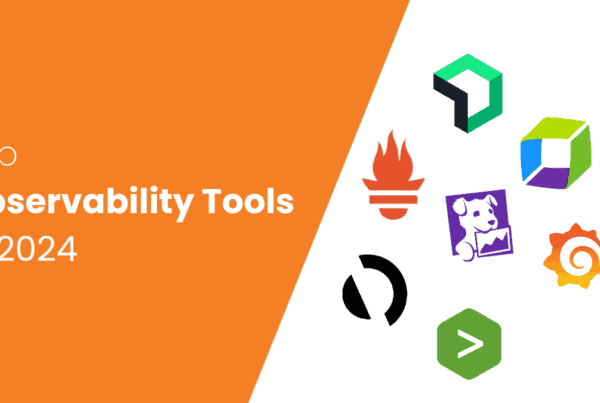
SEO is a way of making a website more visible and useful for search engines like Google and Bing. But SEO is not just about getting a higher rank on the search pages, it is also about making the website better in general.
This is very important for schools, colleges, and universities because it helps them stand out in the online world. When potential students look for information about courses, programs, teachers, or the campus, having good SEO means these institutions can catch their eye. The website will get more attention on the search pages, attracting more students who want to know more.
To make SEO better, you need SEO strategies. Proper, and well-crafted SEO strategies for educational institutions can help them get higher on the search pages and reach their target audience. Here are some of the best SEO strategies for schools, colleges, and universities:
List of SEO Strategies for Schools & Colleges
I am giving you these tips based on the idea that you, as an educational institution, have a website that works well and is instrumental nowadays. Below are some high-level SEO tips that are tailor-made for Educational Institutions based on past experience working with them:
Targeting the Right Audience
If you are operating a college, your primary target audience should be students who are in their final year of schooling. These students are likely to be exploring their options for further education. By targeting this group, you can position your college or institute as a preferred choice for their next step in education.
On the other hand, if you are running a school, your target audience should be parents and students of pre-school age. Parents are often the decision-makers when it comes to choosing a school for their children. By reaching out to them and showcasing the benefits of your school, you can attract new admissions.
Remember, understanding and targeting the right audience is a crucial part of any SEO strategy. It helps ensure that your marketing efforts are focused and effective.
Conduct Keyword Research and Use Relevant Keywords Throughout the Website
According to a 2022 report, Over 80% of online searches begin with an unbranded term, such as “best culinary schools near me” or “online courses for adults”. These are the keywords that you want to rank for because they have more traffic and competition than branded terms, such as your school or college name.
Before you post blogs and course details, you need to make the base of your website better. This includes Home Page, About Us page, Contact Us page, Courses pages, and so on. And to do that, you need keywords. Keywords are the words that users type in search engines to find what they want.
For educational institutions, finding the right keywords is very important. Here’s how it works:
- Keyword Exploration: Institutions should find out the most suitable and popular keywords for their niche, courses, audience, and goals.
- Strategic Placement: Once they have these keywords, they should use them wisely throughout the website. Think of places like title tags, meta descriptions, headings, content, URLs, and image alt texts. This helps search engines understand and match the site with what users are looking for.
- Avoid Keyword Overload: While keywords are like the spice that makes your content tasty, don’t use too much of it. Keyword stuffing—unnaturally using too many keywords—can hurt both SEO performance and the user experience.
For this keyword journey, educational institutions can use some helpful tools:
- Google Keyword Planner: This free tool gives you many keyword ideas, how many people search for them, how competitive they are, and how much they cost to advertise.
- SEMrush: A paid tool that’s worth the money, offering features like keyword analysis, competitor analysis, keyword gap analysis, keyword difficulty assessment, and keyword tracking.
- Ahrefs: Another paid tool that’s very powerful, providing features like keyword explorer, keyword generator, keyword difficulty analysis, and keyword rank tracking.
With the right keywords, educational institutions can make sure their online presence matches what users are searching for, increasing both visibility and relevance.
Create Unique and Informative Content
After you choose the right keywords, you need to write content. Content is the most important part of SEO because it gives useful information to both users and search engines. For educational institutions, making good content is a way of showing their best features, achievements, values, and offers.
The key is not only to make it but to update it regularly to keep it fresh and relevant. Here are some kinds of content that can help improve SEO:
- Detailed Web Pages: Make separate pages for each degree, program, course, faculty, and department. Fill them with complete information, use relevant keywords, and add attractive images.
- Blog Posts: Write blog posts about topics related to the institution’s niche. This could include industry trends, research results, student success stories, and alumni feedback. It’s like a knowledge center that keeps the audience interested.
- Use Multimedia infographics: Images and videos can make the content more engaging and easy to understand for users.
- Informative Resources: Make FAQs, guides, checklists, and other helpful resources. These answer common questions and give useful tips, becoming helpful tools for users who want to learn more about education.
By making different kinds of content in these formats, educational institutions can make their SEO better and also make a rich and informative online presence that connects with their audience.
Optimize the Website for Speed, Usability, and Mobile-friendliness
The website is like the online face of an institution, and it should make users happy and comfortable. For educational institutions that want to make their SEO better and users happier, making the website better is important. Here are some easy ways to make your website great:
- Speedy & steady Hosting: Pick a web hosting service that is fast and reliable, can handle a lot of traffic, and make the website load quickly.
- Media Optimization: Make the size of images, videos, and other media files smaller by compressing and resizing them. This makes the website load faster and gives users a smoother experience.
- Responsive Design: Use a responsive web design that fits well on different screen sizes and devices, like desktops, laptops, tablets, and smartphones.
- User-Friendly Layout: Make a simple layout, navigation, and structure that helps users find the information they want easily.
- Readability Boosters: Use headings, subheadings, bullet points, and lists to break up text. This makes the content easier to read and scan for users.
- Consistent Visuals: Keep the same fonts, colors, images, and other visual elements, matching them with the institution’s brand and style.
With these techniques, educational institutions can make their websites more user-friendly and pleasing, which also helps their SEO performance.
Site Structure and Navigation
Many schools and colleges have websites that are hard to use. They have too much information, but they don’t sort it well or make it easy to find. This can make the users unhappy, the search engines confused, and the website less popular.
Some of the problems that can happen when your website is not well organized are:
- Users may get angry and leave your website if they can’t find what they want quickly and easily.
- Users may not see important things or chances if they don’t know about them or if they are hidden on your website.
- Search engines may not be able to see, understand, or show all the pages and information on your website, making your website rank lower and get less visitors.
- Search engines may not be able to show good and correct information about your website, such as where the pages are, what links to click, or what extra details to see, in the search results, making users less likely to click and do something on your website.
To avoid these problems and make your website better, schools and colleges should follow some good tips for organizing their websites well, such as:
- Make a clear and steady order of your website, based on the main and smaller groups of information, and show it in the web address and the menu.
- Use clear and good words for the pages, groups, and smaller groups, and don’t use words that are too general or unclear, such as “services”, “resources”, or “about us”.
- Use breadcrumbs to show the users where they are on your website and how they can go back to the earlier or higher-level pages.
- Use links inside your website to connect the pages and information on your website and help the users and search engines find and use your website.
- Use sitemaps to give a full and new list of all the pages and information on your website and send them to the search engines using Google Search Console or Bing Webmaster Tools.
- Use robots.txt and meta robots tags to control who can see and show the pages and information on your website and stop bad or the same content from being seen or shown by the search engines.
- Use canonical tags to tell which version of the pages and information on your website you want and avoid mixed or wrong signals to the search engines.
- Use schema.org markup to give data about the pages and information on your website and make your website look better and more related in the search results.
By following these good tips, schools, and colleges can organize their websites well and make the users and the SEO better.
Build Links From Authoritative and Relevant Websites
Links are like bridges that connect different web pages and help users and search engines find them. They are not only connectors, but also very important for SEO because they show how popular, trustworthy, and relevant a website is.
For educational institutions that want to make their online presence better, link-building is a smart thing to do. Here’s how it works:
- Make Shareable Content: Make great content that others like so much they want to link to it. It’s like planting seeds that grow into natural links from other websites.
- Reach Out to Related Websites: Contact websites that are in the same niche as the institution—like industry magazines, blogs, forums, or directories. Ask them to link to the institution’s website or content, making a network of relevance.
- Use Networks: Use the institution’s network—alumni, partners, associations, and media contacts. Ask them to link to the website or specific content, using existing relationships for a boost.
- Guest Posting: Share knowledge by writing guest posts. Write and post content on other websites that are in the same niche, and add a link to the institution’s website. It’s like a win-win partnership.
- Social Media Amplification: Use the power of social media platforms—Facebook, Twitter, LinkedIn, YouTube, etc. Share the institution’s website and content, not only getting more traffic but also creating social signals that help SEO.
Links especially backlinks from reputed domains with high DA can help educational institutions to make their SEO better and also make their reputation and influence stronger in the online world.
Local SEO Strategies for Educational Institutions (Schools & Colleges)
As per echovme, 50% of all organic search queries include four or more words. People use natural and specific phrases to search for what they want. For example, instead of searching for “school”, they might search for “best STEM program in Philadelphia”. You can attract people from nearby locations with the help of Local SEO.
Local SEO is a way of making your website show up when people look for schools near them. This is good for educational places because students want to go to schools that are close to home.
To do this, you need to put your school’s name, address, and phone number on your website. This will help people find your school and want to join it. Your website should be the first thing that students see when they want to learn.
To make your school or college more popular online using SEO, you need to do different things.
Here are some steps you can follow:
- Keyword Optimization: Find out the words that potential students or parents might use when they search for local schools.
- Google My Business: Make and manage your school’s Google My Business page to show up in local search results and on Google Maps.
- Encourage Reviews: Ask parents, students, and staff to leave reviews on your Google My Business page. Good reviews can make your online presence better.
- Visual Appeal: Add nice images to your website and Google My Business page to make your listings more attractive.
- Locality-based Content Generation: Keep a blog and news/updates section on your website. Post articles that your target audience likes and use your target words and locations.
- Social Media Engagement: Use social media platforms like Facebook and Twitter to talk to your community. Share updates, photos, and videos about school events and achievements.
- Email Outreach: Make email workflows to stay in touch with potential and current students and parents.
Measure and Analyze the SEO Performance and Results
SEO means making your website better for search engines. You have to keep working on it and check how it is doing. Schools should see how well their SEO is working and what they can do better. They should also use the information they get to change their SEO plan. Some tools that can help with this are:
- Google Analytics: a free tool that shows you how many people visit your website, what they do, and how they become your customers.
- Google Search Console: a free tool that shows you how your website works, how search engines see it, and how it looks on search results.
- SEOptimer: a free tool that checks your website for problems, gives you SEO tips, and helps you track your SEO progress.
Conclusion
These are some of the most common SEO Strategies for educational institutions (schools, colleges, and universities) that can help them improve their online visibility and reach their target audience.
As demonstrated by successful institutions like Harvard, University of Phoenix, UCLA, University of Michigan, and University of Texas at Austin, implementing effective SEO strategies can significantly impact a website’s performance and also create a positive image of the institute.
However, keep in mind that SEO is a long-term and dynamic process that requires constant learning and adaptation to the changing trends and algorithms of search engines. However, with the right SEO strategy and tools, educational institutions can achieve their SEO goals and objectives.
References:
- https://www.finalsite.com/blog/p/~board/b/post/smart-school-marketing-strategies
- https://appinstitute.com/school-marketing/
- https://www.seoptimer.com/blog/seo-for-higher-education/
- https://www.webfx.com/industries/education/colleges/seo/
- https://digitalagencynetwork.com/seo-strategy-for-schools-and-educational-institutes/
- https://www.finalsite.com/blog/p/~board/b/post/search-engine-statistics-for-schools
- https://echovme.in/blog/keywords-importance-in-digital-marketing/



